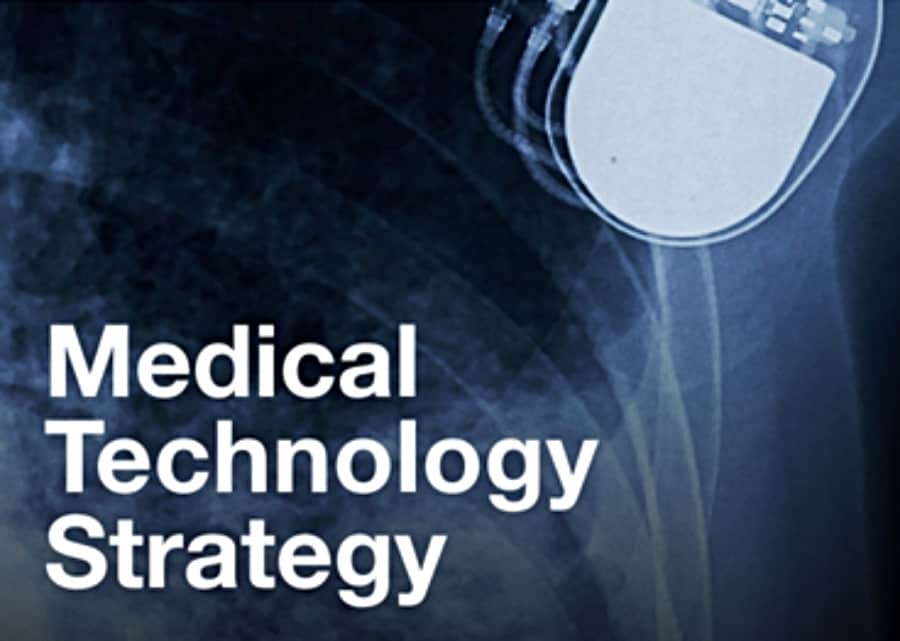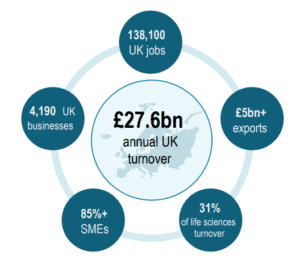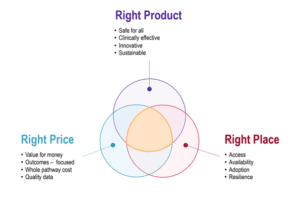BHTA calls on the DHSC to work closer with the wider industry to deliver its MedTech Strategy

The strategy aims to ensure patients across the UK are set to benefit from access to safe, effective and innovative equipment and medical devices.
David Stockdale, CEO of the BHTA, commented: “We welcome the publication of the Medical Technology (MedTech) Strategy, which as the first of its kind is long overdue.
“The Government’s vision for ‘Right Product, Right Price, Right Place’ and the urgency they are placing on ensuring the sector has a sustainable future is very welcome, but it is vital that the Government work with businesses and trade bodies to make sure that the vision becomes a reality.
“In a complex healthcare landscape, the implementation of this strategy will be challenging, and we are calling on the DHSC to make working closely with the BHTA, our members and the wider industry a key driver of making sure that this strategy delivers successfully for patients.”
A significant amount of MedTech employment in the UK, around 31 percent, is in small and medium-sized enterprises (SMEs), which make up over 85 percent of the companies in the UK MedTech sector, according to the Bioscience and health technology sector statistics 2020.
The UK is also a major player in the international market, exporting over £5.6 billion of MedTech products in 2021, says MedTech Europe.
Total current healthcare expenditure in the UK accounted for 12 percent of gross domestic product (GDP) in 2020, compared with 9.9 percent in 2019.
The NHS spends £10 billion a year on MedTech including syringes, wheelchairs, cardiac pacemakers and medical imaging equipment such as X-ray machines.
Building on learnings from the COVID-19 pandemic and the rapid development of medical technologies during that time such as lateral flow tests and ventilators, the MedTech Strategy aims to ensure the right product is available at the right price and in the right place. As a result, patients will continue to have access to high-quality care, alongside improved patient safety and health outcomes.
The strategy aims to deliver value for money, using the latest data on the effectiveness of new technology to ensure prices are reasonable for the health system.
It will also help build resilient supply chains and ensure the UK is prepared for future pandemics, just as demand for technology like syringes and ventilators rapidly increase during the pandemic.
The blueprint for boosting NHS MedTech which will focus on accelerating access to innovative technologies, such as the latest generation of home dialysis machines that enable people to manage their own health at home and in their day to day lives.
It also sets out steps which need to be taken to ensure patients can access safe, effective and innovative technology through the NHS, which can help diagnose, treat and deliver care more quickly, freeing up clinician time.
Using MedTech effectively will be critical in reducing waiting lists for treatment caused by the pandemic as it has the potential to speed up diagnosis and deliver new and improved ways to treat and support patients.
Having considered the broader landscape and current activity, the gaps and opportunities have been identified where the DHSC wishes to prioritise additional effort, it states that together with the existing work in the sector, these priority areas will support us in delivering the right product, for the right price, in the right place.
The four priority areas it has identified are: Resilience and continuity of supply, continuity of supply of MedTech is critical to the provision of ongoing care to patients and so must be robustly guaranteed; Innovative and dynamic markets, innovative MedTech offers an important opportunity to improve patient outcomes and help deliver best value for taxpayer money; Enabling infrastructure, in order to deliver ambitions in the medtech sector an underlying framework of enablers that will support its work is needed; and Specific market focuses, MedTech represents an exceptionally diverse area, so any approach must recognise the complexity of this sector.
COVID-19 demonstrated the importance of fast and accurate diagnostic testing and genome sequencing to process and share results, and home lateral flow testing showed the potential for increased use of diagnostics outside of formal clinical settings, to support earlier diagnosis and free up staff time.
Will Quince, Minister of State for Health, said: “The UK’s innovative spirit delivered revolutionary technology during the pandemic – from COVID tests and ventilators – and we want to harness this in promoting cutting-edge medical advancements to improve patient care.
“The NHS spends around £10 billion a year on medical technology and I’m looking forward to working with industry to use this as we focus on reducing hospital stays, enhancing diagnosis, preventing illness and freeing up staff time.
“This new medtech strategy will help build a sustainable NHS with patients at the centre so people can continue to access the right care at the right time.”
The key aims of the strategy include boosting the supply of the best equipment to deliver greater resilience to health care challenges, such as pandemics, and enhance NHS performance through modernised technology which will enable faster diagnosis, treatment and ultimately discharge to free up hospital beds.
It will also encourage ambitious, innovative research to secure the UK’s position as a global science superpower and attract vital investment for the UK economy and create jobs across the country. In 2021, there were already around 60 different research programmes supporting innovative technologies, representing over £1 billion of funding.
The strategy hopes to increase understanding and awareness of MedTech by clinicians which will lead to more informed purchasing on new products and deliver better value for taxpayer money and better services for patients.
Additionally, it aims to build on the Life Sciences Vision to improve collaboration between the NHS, the National Institute for Health and Care Excellence (NICE) and the Medicines and Healthcare products Regulatory Agency (MHRA) as an innovation partner to ensure patients can access the right products safely.
The implementation plan to deliver on this strategy will be published later this year and will include a review of the £1 billion spent on appliances in primary care, new comparison tools to enable better decision making when purchasing which achieve the best results for patients, and collaboration with industry to ensure availability of key products to keep patients safe.
Dr Sam Roberts of the National Institute for Health and Care Excellence said: “It is essential that clinicians and patients can access the most impactful and cost-effective medical technologies, while medtech companies need to be confident that they are developing products which meet the needs of patients and the NHS.
“This strategy sets out a clear vision for the future. NICE is excited to be part of the delivery of this vision, working with our partners to further develop world leading processes to provide a sustainable pathway for medical technologies, from innovation to implementation.”
Dr Timothy Ferris, National Director for Transformation at NHS England said: “Medical technology has an enormous role to play in benefitting patients now and in the future.
“The importance of medtech was made clear during the COVID-19 pandemic and as the NHS moves through its recovery, it will play a key role in addressing the challenges we face.”



